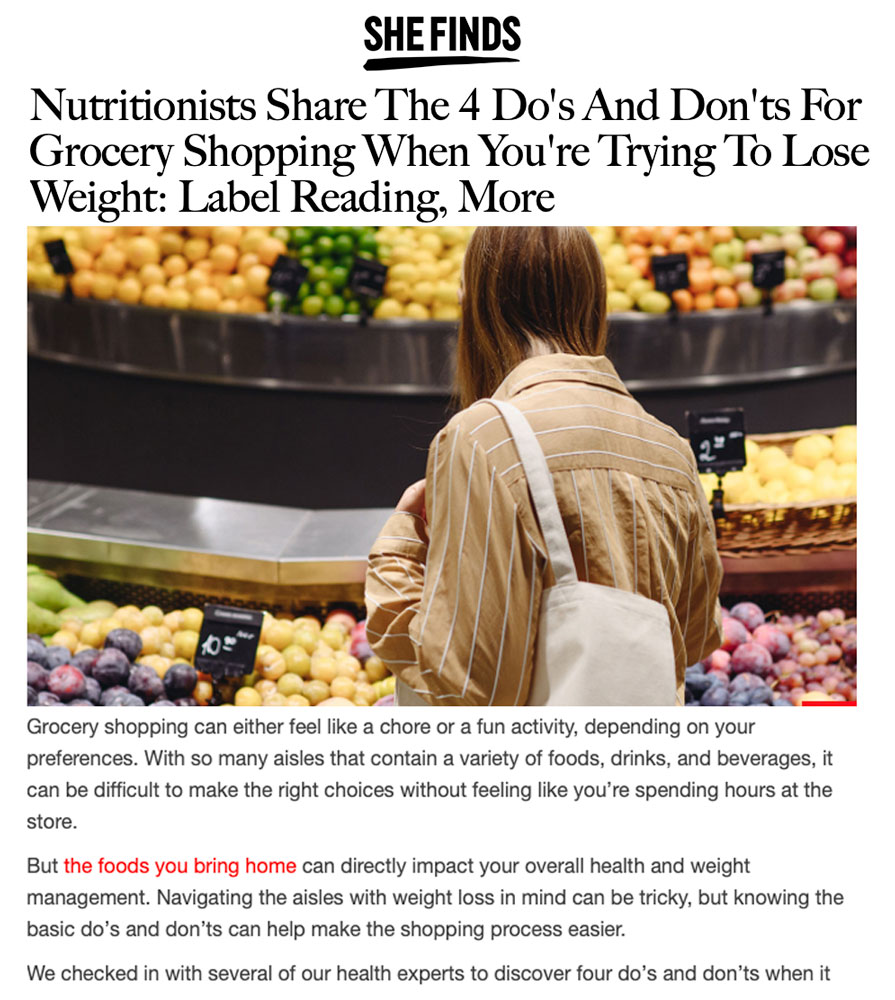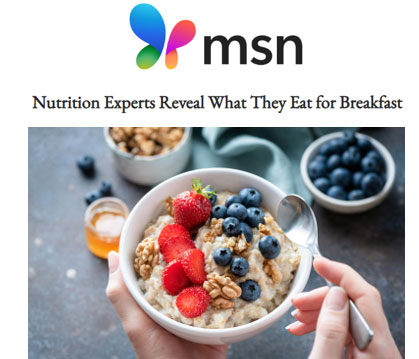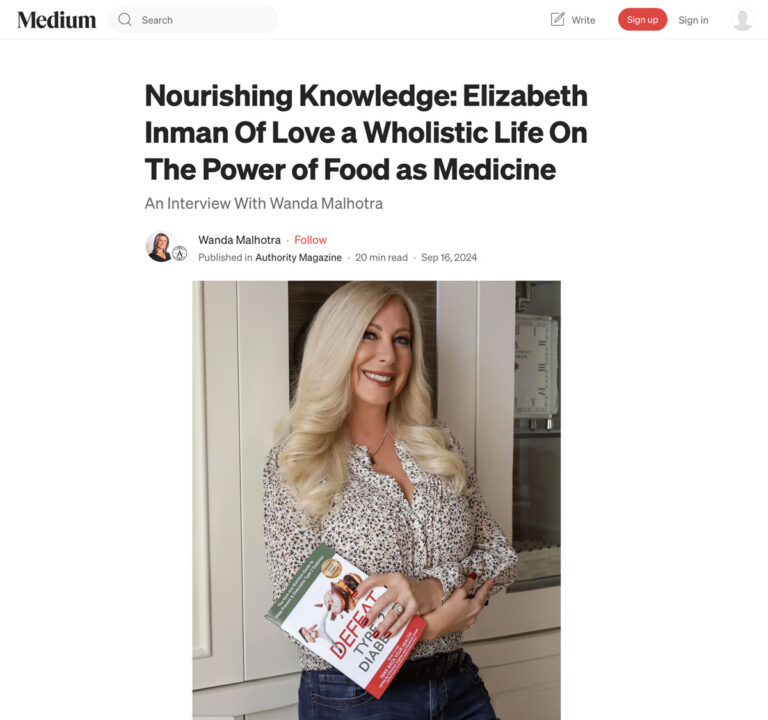Nutritionists Share The 4 Do’s And Don’ts For Grocery Shopping When You’re Trying To Lose Weight: Label Reading, More

Reposted from SheFinds.com read original article here
Grocery shopping can either feel like a chore or a fun activity, depending on your preferences. With so many aisles that contain a variety of foods, drinks, and beverages, it can be difficult to make the right choices without feeling like you’re spending hours at the store.
But the foods you bring home can directly impact your overall health and weight management. Navigating the aisles with weight loss in mind can be tricky, but knowing the basic do’s and don’ts can help make the shopping process easier.
We checked in with several of our health experts to discover four do’s and don’ts when it comes to shopping with weight loss in mind. According to them, some of the do’s and don’ts include label reading, not shopping on an empty stomach, and more. Read on to get all their insights.
Do: Make a shopping list
One of the best things you can do before heading to the grocery store is to make a shopping list. The shopping list should include whole, nutrient-dense foods such as fresh fruits, veggies, lean proteins, and whole grains.
"I always advise clients to make a list, as this helps them stay focused on their goals and prevents impulse buys. When you wander the aisles without a plan, you’ll likely throw in those tempting snacks," says Renato Fernandes, a clinical nutritionist from Saude Pulso.
Do: Mindful label reading
If you notice, many packaged items in grocery stores come with a long list of ingredients. Most people don’t even know where these ingredients come from and can hardly pronounce them! Reading these labels is important because it allows you to spot potentially unhealthy ingredients and choose better alternatives. As a popular food quote says, "If your great grandmother wouldn’t recognize it as food, don’t eat it!"
"Check ingredients and nutrition facts. Look for products with minimal ingredients and avoid those with added sugars, artificial sugars, colors, unhealthy fats, and preservatives. The more ingredients, the more processed the food is. Pay attention to serving sizes to make informed choices," suggests Christen Kaplan, certified holistic nutritionist, wellness and supplementation expert, author, and CEO of Love a Wholistic Life.
Don't: Fall for health marketing
Many items at the grocery store are often labeled as low-fat, fat-free, or zero calories. But these can actually be misleading. These products could have other unhealthy replacements instead such as artificial sweeteners, additives, or refined carbs. Although some of these "healthy" items can be low in calories, they often lack other important nutrients.
"Food labels on products are susceptible to deceptive marketing tactics. When you're choosing a food item, become a professional at reading the nutrition label rather than falling for baseless claims like "healthy," "natural," or "clean" that are not regulated terms that reflect real health qualities," says Lauren Mahesri, RD, from The Pediatric Dietitian.
Don't: Shop on an empty stomach
We’ve all been "hangry” before, and part of being hangry includes a cloud of judgment that leads to impulse buying. When you’re very hungry, you tend to grab high-calorie, unhealthy snacks like chips, candy, or other processed foods that do nothing for weight loss.
Hunger will also overestimate how much food you really need, leading to buying excess amounts of food.
"Shopping while hungry can lead to poor choices, as you’re more likely to pick high-calorie, low-nutrient snacks that don’t align with your goals," states Carol-Ann Robert, registered dietitian nutritionist.






